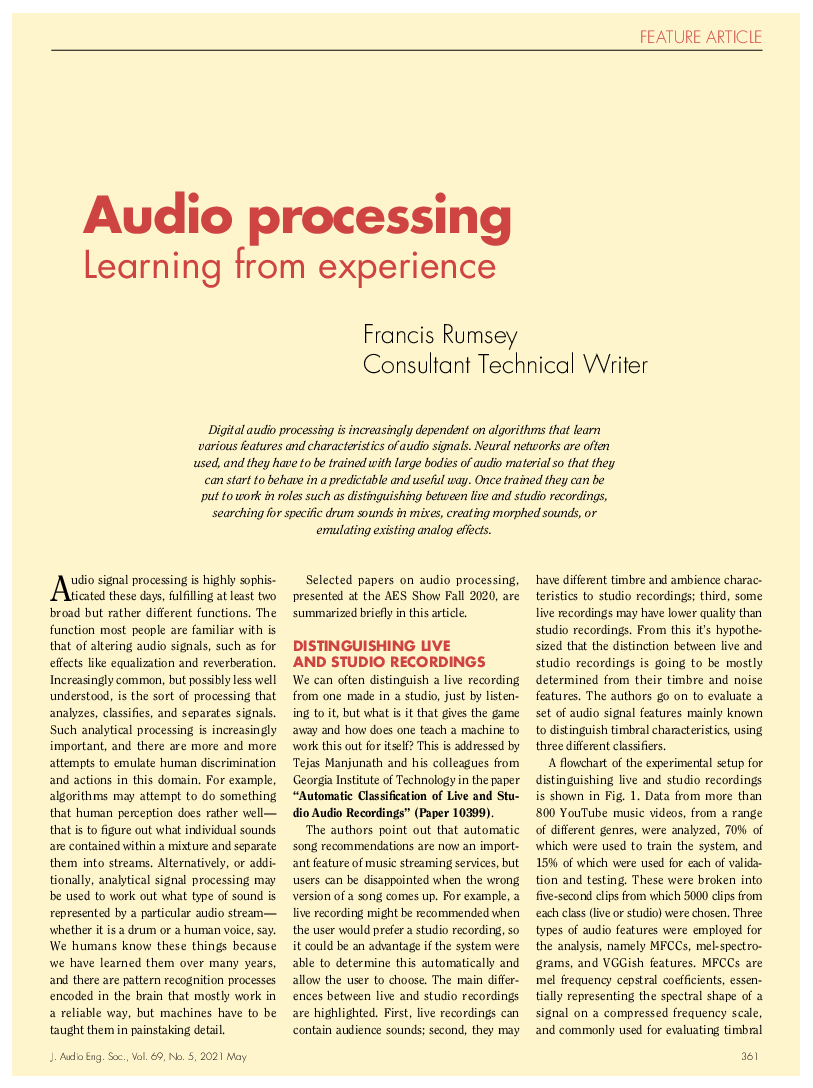Home / Publications / E-library page
You are currently logged in as an
Institutional Subscriber.
If you would like to logout,
please click on the button below.
Home / Publications / E-library page
Only AES members and Institutional Journal Subscribers can download
Digital audio processing is increasingly dependent on algorithms that learn various features and characteristics of audio signals. Neural networks are often used, and they have to be trained with large bodies of audio material so that they can start to behave in a predictable and useful way. Once trained they can be put to work in roles such as distinguishing between live and studio recordings, searching for specific drum sounds in mixes, creating morphed sounds, or emulating existing analog effects.
Author (s): Rumsey, Francis
Affiliation:
(See document for exact affiliation information.)
Publication Date:
2021-05-06
Import into BibTeX
Permalink: https://aes2.org/publications/elibrary-page/?id=21041
(470KB)
Click to purchase paper as a non-member or login as an AES member. If your company or school subscribes to the E-Library then switch to the institutional version. If you are not an AES member Join the AES. If you need to check your member status, login to the Member Portal.

Rumsey, Francis; 2021; Audio Processing—Learning From Experience [PDF]; ; Paper ; Available from: https://aes2.org/publications/elibrary-page/?id=21041
Rumsey, Francis; Audio Processing—Learning From Experience [PDF]; ; Paper ; 2021 Available: https://aes2.org/publications/elibrary-page/?id=21041